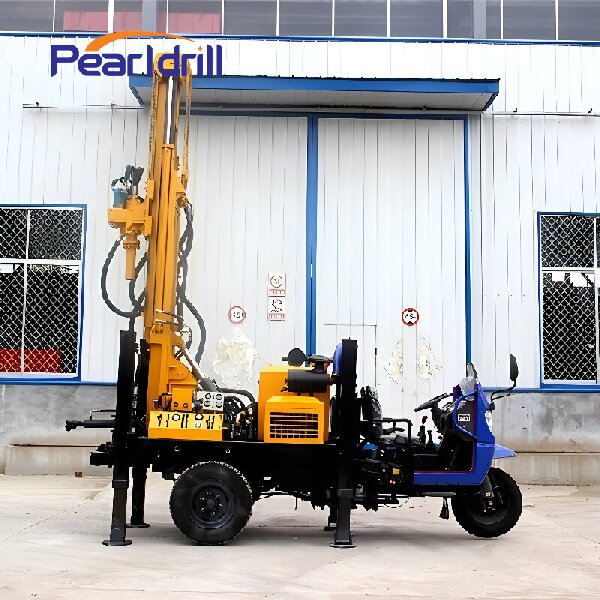The functions of lubricants used in water well drilling rigs
The functions of lubricants used in water well Drilling Rigs are multifaceted, and the types of lubricants are also numerous. The effects of using lubricants under different conditions and the costs involved also vary. The functions of lubricants used in water well drilling rigs mainly include the following aspects:

1.Reduce friction and lower wear:
During the drilling process, violent friction occurs between the drill bit and the formation, and between the drill pipe and the borehole wall, resulting in wear and even damage to the drill bit and drill pipe.
Lubricants can form a protective film on the surface of the drill bit and drill pipe, reducing friction, lowering wear, and extending the service life of the drill tools.
2.Cool the drill bit and prevent overheating:
During the drilling process, a large amount of heat is generated due to friction. If heat is not dissipated in time, it will cause the drill bit to overheat, affecting drilling efficiency and even burning the drill bit.
Lubricants can take away the heat generated by the drill bit, playing a cooling role and keeping the working temperature of the drill bit within the normal range.
3.Carry cuttings and keep the borehole clean:
During the drilling process, the cuttings cut down by the drill bit will remain in the borehole. If they are not removed in time, it will affect the drilling efficiency and even lead to stuck pipes.
Lubricants can carry the cuttings and bring them out of the borehole, keeping the borehole clean and ensuring the smooth progress of drilling.
4..Seal the borehole wall and prevent leakage:
In some formations, the borehole wall is prone to collapse or leakage, resulting in the loss of drilling fluid and affecting drilling safety.
Lubricants can fill the pores of the borehole wall, playing a sealing role and preventing the borehole wall from collapsing and the drilling fluid from leaking.
5.Improve drilling efficiency and reduce drilling costs:
Through the effects of reducing friction, cooling the drill bit, carrying cuttings, and sealing the borehole wall, lubricants can improve drilling efficiency, shorten the drilling cycle, and reduce drilling costs.
Common types of lubricants:
Mineral oil: Low cost, but poor environmental performance.
Vegetable oil: Good environmental performance, but high cost.
Synthetic oil: Excellent performance, but the highest cost.
Water-based lubricants: Good environmental performance, but relatively poor lubrication performance.
How to choose a lubricant:
When choosing a lubricant, the following factors need to be considered comprehensively:
Geological conditions: Different geological conditions require different types of lubricants.
Drilling depth: The greater the drilling depth, the better the lubrication performance of the lubricant needs to be.
Drilling cost: The cost of the lubricant needs to be considered, and the most cost-effective lubricant should be selected.
Environmental requirements: If there are environmental requirements, environmentally friendly lubricants should be selected.
The use of lubricants is required precautions:
When using lubricants, they should be added in accordance with the instructions. Excessive or insufficient amounts will affect their effectiveness.
Replace the lubricant regularly to maintain its performance.
Pay attention to the storage of lubricants to avoid contamination and deterioration.
